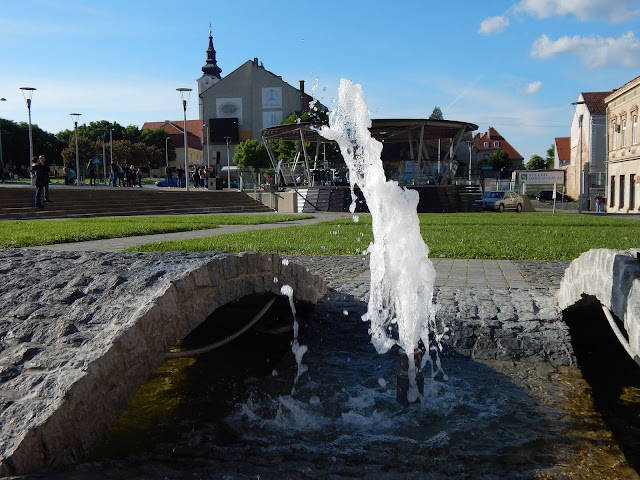The old town of Križevci is preserved architectural complex in the ancient city walls, erected 1405th years and covers the entire Strossmayerov Square as the largest in the city.
Inside the old city preserved some of the most important public buildings such as the County's palace, and now government building (18th century), the former Pauline monastery complex with the parish church of St. Anne (17th century), the oldest city church of St. Cross (mentioned in the 13th century), the building of the City Museum (17th and 18th centuries) and the former old assembly hall, and now Art Gallery (18th century).
Greek Catholic Cathedral of the Holy Trinity and the bishop's residence.
The old town consists of private and other (mostly owned by Jews) and public buildings built in the second half of the 19th and early 20th century, which are located along the main street with nice Zakmardijevu fronts in the neo-Romanesque, Neo-Renaissance, Neo-baroque, classicism and art nouveau style.
Parish Church of St Ana
The Church of St Ana is situated in the center of the town, in the street of Ivan Zakmardi. It was built in 1689, as part of a Pauline monastery. This Baroque church has one nave and a rectangular sanctuary, and there is a large bell tower between the church and the monastery. There are valuable Late Baroque inlaid cupboard, and a stone baptistery dating from the 17th century in the sacristy. The remains of the Pauline frescos can be seen on the east wall of the sacristy and part of the nave. The original Pauline altar was not preserved, so there are only Baroque painting of St Ana and the 18th century wooden crucifix in the middle of the sanctuary. There are also two paintings showing The Martyrdom of St Erasmus and Twenty-five Pauline Martyrs, dating from the mid 18th century. The founder of the Pauline monastery was prothonotary Ivan Zakmardi. He is credited with founding the first Gymnasium located within the Pauline Monastery, which was granted its Charter by king Leopold II in 1674. In 1786 the Pauline order was abolished by emperor Joseph II, and shortly thereafter the church became the Parish Church, whereas the monastery was converted into the Rectory and the Town Hall.

Chapel of St Florian
Baroque Chapel of Saint Florian is situated near the town Post Office, and the House of Croatian Army, at the intersection of Zagreb road with a network of town streets. Out of the three chapels in Križevci, it is the Chapel of Saint Florian that contains the most valuable paintings. This Votive Church was built in 1735, and restored in 1751, when the quadrant vault with a segmented apse was constructed.
Chapel of St Mark of Križevci
The Chapel of St Ladislaus also bears the name of St Mark of Križevci, who was proclaimed a co-patron of the chapel in 1969. However, ever since St Mark of Križevci was proclaimed a saint in 1995, people have referred to the chapel as the Chapel of St Mark of Križevci. The chapel stands alongside the main road passing through the Upper Town. This early Baroque chapel dates from the 17th century. Baroque architectural style can be seen in the shape of the sanctuary arch, and the nave vaulted between 1731 and1735. The Classicist Bell Tower is worthy of mention. The altars inside the Chapel of St Mark of Križevci (the Chapel of St Ldislaus) were restored in 1731. Within the altar there is a painting of St Mark of Križevci, made in 1993 by Zoran Homen, a painter from Križevci.




























Nema komentara:
Objavi komentar